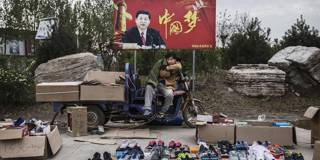China’s deeply entrenched countercyclical policy mindset is misaligned with its structural challenges: mounting deflationary risks, exacerbated by the lethal interplay between a rapidly aging population and serious productivity problems. The authorities need to devise a new response to unleash consumption-led growth.
NEW HAVEN – China is facing a broad constellation of problems: an underperforming economy, a superpower conflict with the United States, stiff demographic headwinds, and a serious productivity challenge. Its policy response so far has drawn on a playbook that has proven successful in the past but that may not be enough today. Battered from all sides, Chinese authorities need the courage and imagination to devise new solutions.
Despite being a diehard China optimist for 25 years, first as an investment banker and more recently as an academic, I have become far more cautious about the country’s medium- to longer-term economic outlook. This was not a spontaneous change in my thinking, but rather reflects my growing concern about the mismatch between powerful structural forces and China’s time-worn standard countercyclical toolkit.
This policy challenge highlights China’s need to shift from an export- and investment-led growth model to one driven increasingly by private consumption. In fact, I have repeatedly stressed China’s rebalancing imperative, including in my Yale course “Next China,” my books Unbalanced: The Codependency of America and China and, more recently, Accidental Conflict: America, China, and the Clash of False Narratives, and in presentations to the China Development Forum over many years.

NEW HAVEN – China is facing a broad constellation of problems: an underperforming economy, a superpower conflict with the United States, stiff demographic headwinds, and a serious productivity challenge. Its policy response so far has drawn on a playbook that has proven successful in the past but that may not be enough today. Battered from all sides, Chinese authorities need the courage and imagination to devise new solutions.
Despite being a diehard China optimist for 25 years, first as an investment banker and more recently as an academic, I have become far more cautious about the country’s medium- to longer-term economic outlook. This was not a spontaneous change in my thinking, but rather reflects my growing concern about the mismatch between powerful structural forces and China’s time-worn standard countercyclical toolkit.
This policy challenge highlights China’s need to shift from an export- and investment-led growth model to one driven increasingly by private consumption. In fact, I have repeatedly stressed China’s rebalancing imperative, including in my Yale course “Next China,” my books Unbalanced: The Codependency of America and China and, more recently, Accidental Conflict: America, China, and the Clash of False Narratives, and in presentations to the China Development Forum over many years.